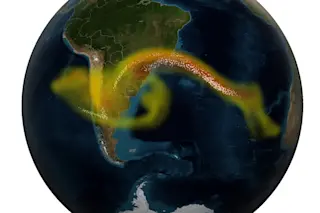Just 10 kilometers from the frenetic pulse of central Naples, in stark contrast to the Italian city’s impressive volcanic-stone churches and effortlessly stylish urbanites, sits a boxy, concrete building. Inside this unremarkable government outpost, accessed through a pair of sliding glass doors, is the Vesuvius Observatory monitoring room, lit by the cool glow of 92 flat-panel screens. On each screen, volcano notification systems, including those from seismic devices sensitive enough to pick up a passing bus, blink and beep in real time. In the middle of the room is a desk. And in the middle of that desk is a single red phone.
Twenty-four hours a day, 365 days a year, there are at least two people in the room, ready to pick up the phone and advise the national civilian defense in the event of a volcano-related emergency.
But Mount Vesuvius, its iconic cone rising conspicuously on the city’s ...














